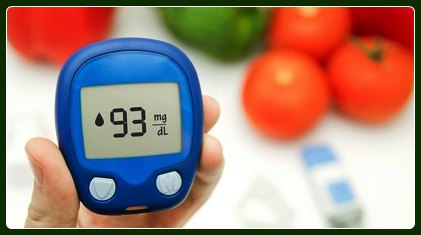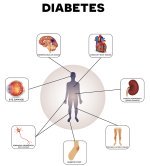Normal Blood Sugar Level

A normal blood sugar level for person without diabetes and who is not fasting is between 82 mg/dL and 110 mg/dL. Optimally, your blood sugar should be 82 mg/dL (4.4 mmol/L). What you eat is one of the biggest factors that affect your blood sugar level. As such, normal blood glucose ranges are typically reported based on how long it has been since you have eaten. The following table shows normal blood glucose levels based on how long it has been since you have eaten. Note: This table assumes that there is more than two hours in between each meal.
How does my body maintain a normal blood sugar level?
If you are healthy, your body maintains a normal blood sugar level by processing glucose effectively. Blood glucose comes from two major sources: the food you eat and your liver. During digestion, glucose is absorbed into your bloodstream. Normally, it then enters your body’s cells, aided by the action of insulin. The hormone insulin comes from your pancreas. When you eat, your pancreas secretes insulin into your bloodstream.
As insulin circulates, it acts like a key, unlocking microscopic doors that allow the glucose to enter your cells thereby providing them energy. By letting the glucose into your cells, insulin effectively lowers the amount of glucose in your bloodstream, preventing it from reaching high levels. As the sugar level in your blood drops, so does the secretion of insulin from your pancreas. Meanwhile, your liver participates in this process by both storing and manufacturing glucose. When the insulin level in your blood is too high, like after a meal, your liver stores extra glucose as glycogen in case your cells need it later.
When your insulin levels are low, like when you haven’t eaten for a while, your liver releases the stored glucose into your bloodstream to keep your blood sugar within a normal range.
How do I know if I have a normal blood sugar level?
If you receive regular physical exams that include blood work, your doctor is likely testing your blood sugar if he or she suspects our blood sugar levels are not normal based on certain symptoms or risk factors. Typically, your doctor will use one of the following tests:
- Glycatedhemoglobin (A1C) test
- Random blood glucose test
- Fasting blood glucose test
The A1C test is perhaps the most effective test to see if your blood sugar levels are normal or not. Why? Because it will tell you what your average blood sugar has been for the past two to three months. It work by measuring the percentage of blood sugar attached to hemoglobin, the oxygen carrying protein in your red blood cells. The higher your blood sugar levels, the more hemoglobin you will have with sugar attached. An A1C test result of less than 5.7% indicates that you have a normal blood sugar level.
The random blood glucose test is the one doctors will typically order as part of routine blood work during a physical exam. Since what you have eaten, how much and how long it has been since you have eaten will all impact your blood sugar levels, this test does not definitively show if you have normal blood glucose levels or not. However, your blood sugar should never go over 200 mg/dL. Therefore if ate recently, the test may correctly flag a diabetic condition. This test is also one you can easily conduct on your own by purchasing an over the counter blood glucose monitor and test your own blood.
If the A1c test is not available or you have a condition like pregnancy or you have an uncommon form of hemoglobin, your doctor may ask you to do a fasting blood glucose test. Your doctor will typically ask you to come into the office first thing in the morning. They will want you to verbally confirm that you haven’t eaten or drunk anything except for water for at least eight hours. Then they will take a sample of your blood and send it to the lab to determine what your fasting blood sugar level is. If you want, you can perform this test on your own using a blood glucose monitor and testing your own blood first thing in the morning. A fasting blood sugar test result of 70-100 mg/dL (3.9-5.5 mmols/L) is normal.
Symptoms that indicate you do not have normal blood sugar levels
According to the American Diabetes Association, the following symptoms may be an indicator that you do not have a normal blood glucose level:
- Excessive thirst
- Increased urination
- Constant hunger
- Unexplained fatigue
- Unexplained weight loss or gain
- Blurred vision
- Slow-healing cuts and bruises
- Tingling or loss of feeling in your hands and feet
- Recurring bladder or vaginal infections
- Recurring infections of gums or skin
Risk factors for not having normal blood sugar levels
The following risk factors put you at higher risk for not having a normal blood sugar level:
- Family history of diabetes
- Being overweight
- Being inactive
- Being over 65 years old
- Race and ethnicity
Summing It Up
For the majority of healthy individuals, a normal blood sugar level is:
- Fasting blood sugar levels should be between 70 and 100 mg/dL (3.9 to 5.6 mmol/L )
- Optimal non fasting glucose level in humans before a meal is less than 100 mg/dL (5.5 mmol/L )
- When operating normally the body restores blood sugar levels to a range of 4.4 to 6.1 mmol/L (82 to 110 mg/dL) within two hours after eating
- Shortly after a meal the blood glucose level may rise temporarily up to 7.8 mmol/L (140 mg/dL)



New! Facebook Comments
What do you think? Share your thoughts below...